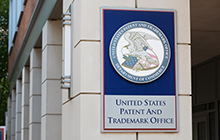On January 10, 2024, the USPTO published guidelines for assessing enablement in view of Amgen v. Sanofi and other recent court cases (“the Guidelines”). The Guidelines state that they are not intended to “announce any major changes to USPTO practice or procedure” but instead “incorporat[e] guidance from the Amgen decision and several post-Amgen enablement court decisions that are consistent with current USPTO policy.”
“The enablement requirement refers to the requirement of 35 U.S.C. § 112(a) that the specification must describe the invention in such terms that one skilled in the art can make and use the claimed invention.” The Guidelines emphasize that an enablement assessment during prosecution still requires use of the Wands factors, including “(A) the breadth of the claims, (B) the nature of the invention, (C) the state of the prior art, (D) the level of one of ordinary skill, (E) the level of predictability in the art, (F) the amount of direction provided by the inventor, (G) the existence of working examples, and (H) the quantity of experimentation needed to make and use the invention based on the content of the disclosure.” Per the Guidelines, use of the Wands factors is consistent with Amgen and several of the Federal Circuit’s post-Amgen decisions, including Baxalta. The Guidelines state “[t]he Wands analysis should provide adequate explanation and reasoning for a lack of enablement finding in order to facilitate the USPTO’s clarity of the record goals, as well as the USPTO’s goals of providing consistency between examination and post-grant challenges.”

